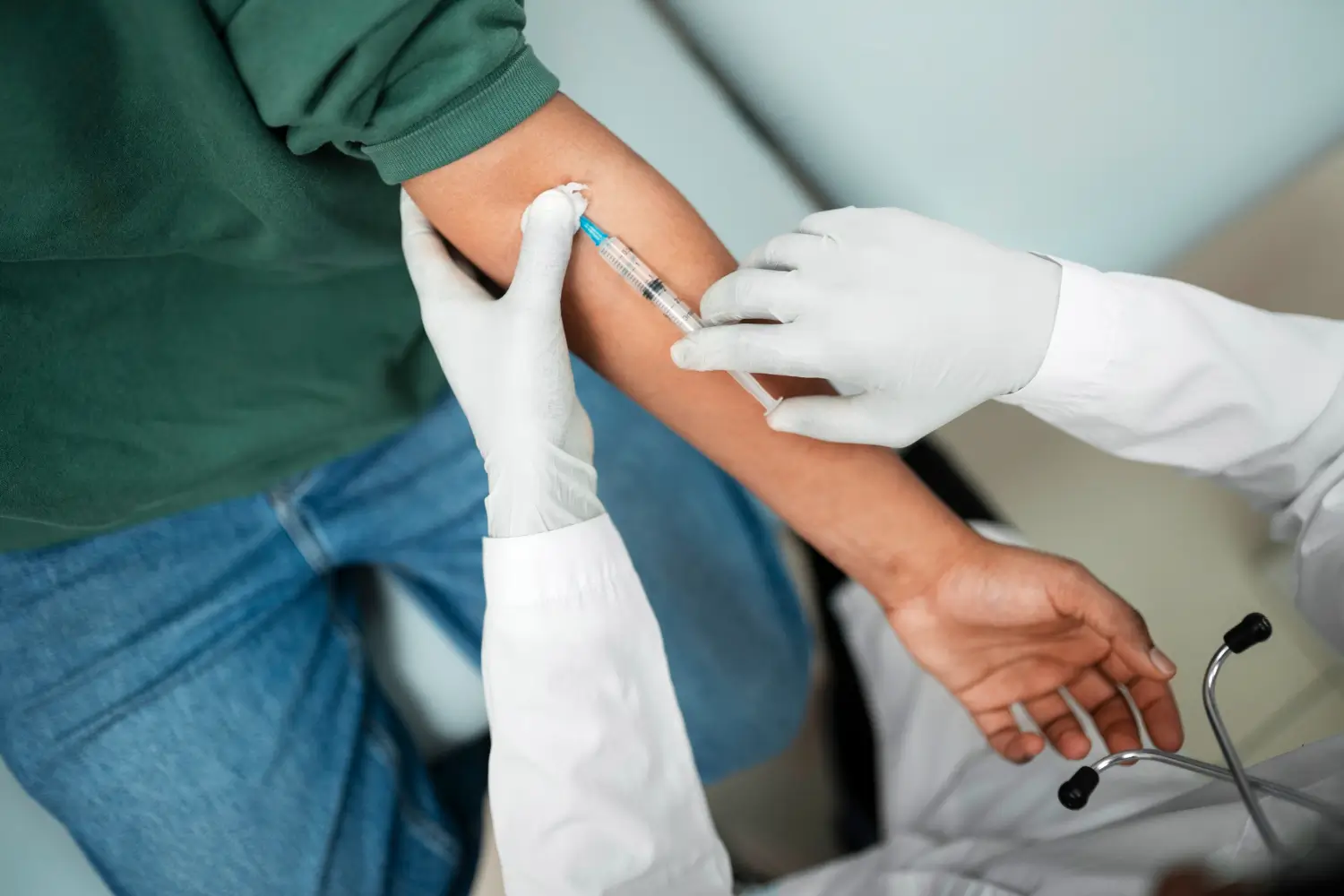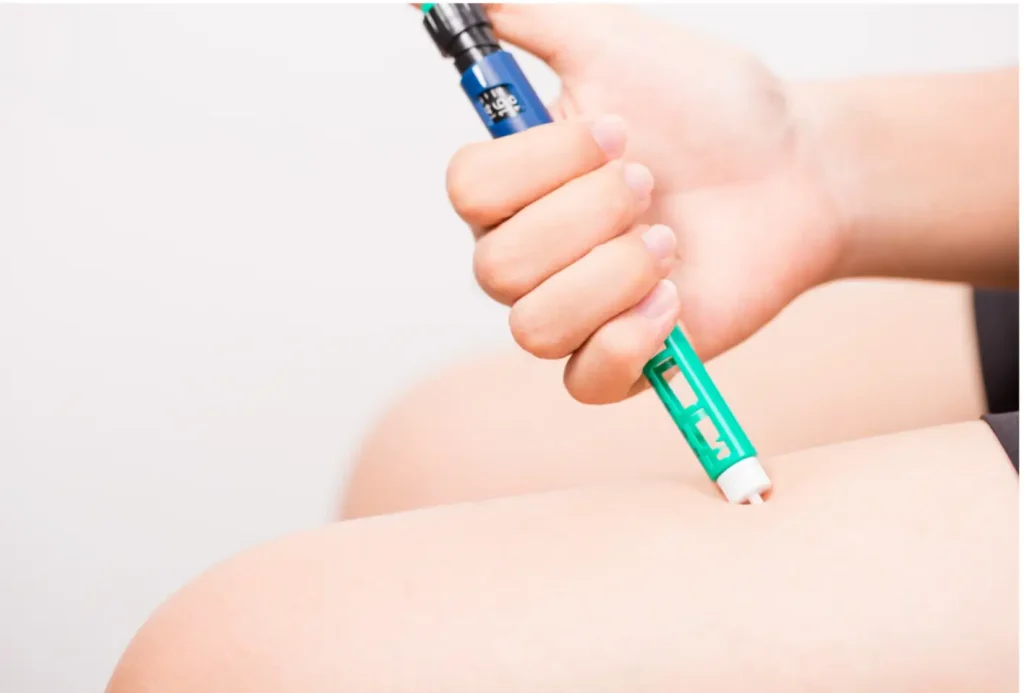Autoimmune diseases affect nearly 10% of the global population, with women disproportionately impacted. A large-scale study of over 20 million people highlighted just how widespread these conditions are, underscoring the need for effective, targeted treatments.
One such option is Saphnelo (anifrolumab-fnia), an FDA-approved biologic for adults with moderate to severe systemic lupus erythematosus (SLE). It works by blocking type I interferon signaling, a key pathway involved in lupus inflammation.
In this article, we’ll explore the full list of known Saphnelo side effects, from mild reactions to rare but serious events, so patients and healthcare providers can better understand its safety profile and make informed treatment decisions.
Key Takeaways
- Saphnelo (anifrolumab-fnia) is an FDA-approved biologic for adults with moderate to severe lupus (SLE) who are on standard therapy.
- Common side effects include headache, nausea, fatigue, and infusion-related reactions like flushing or chills. These typically resolve without intervention.
- Infusion-site discomfort is possible but uncommon, as Saphnelo is administered intravenously and not subcutaneously.
- Serious or rare risks, such as infections, hypersensitivity reactions, or changes in blood cell counts, are uncommon but should be monitored. Reports of liver enzyme elevations exist in post-marketing data but are not emphasized in FDA labeling.
- Patient education, vaccination updates, and open provider communication are essential for minimizing risk and ensuring treatment success.
About: Medical Spa RX provides medical practices with premium products at the best prices. If you’re looking to buy Saphnelo online for your practice, the sales representatives at Medical Spa RX can give you guidance.
Common Side Effects of Saphnelo: What to Expect
As outlined in the Saphnelo prescribing information, patients receiving anifrolumab-fnia may experience mild to moderate side effects, especially during or shortly after intravenous infusion. These reactions are generally temporary and often resolve without intervention. The most commonly reported reactions include:
- Infusion-related reactions, such as chills, low-grade fever, or flushing, tend to be brief and improve on their own. While not universal, they are among the more frequently observed responses in clinical use.
- Headaches, usually mild to moderate, may occur post-infusion and typically subside with rest or over-the-counter pain relief.
- Nausea, though uncomfortable, is often short-lived and manageable through hydration or small dietary adjustments.
- Fatigue is another common experience following infusion, usually improving with adequate rest and hydration.
- Infusion-site discomfort, such as redness or tenderness, is less common with Saphnelo (given via IV rather than subcutaneous injection), but still possible in some cases. It typically resolves without treatment and is not part of the top 5% or more adverse events.
Healthcare providers should encourage patients to stay hydrated, rest when needed, and promptly report any persistent or worsening symptoms to guide safe and supportive care.
Managing Infusion-Related Reactions with Saphnelo
Most infusion-related reactions with Saphnelo are mild and easily managed when clinicians know what they’re doing. While symptoms like chills, flushing, or low-grade fever may arise, careful premedication and monitoring can make the infusion process smoother. Strategies include:

- Premedication with acetaminophen or antihistamines may be offered to patients with a history of infusion reactions. This reduces discomfort and improves tolerance.
- Infusion rate adjustment, especially during the first infusion, can help minimize the body’s initial inflammatory response. Starting slow is key.
- Vital sign monitoring before, during, and after the procedure helps detect subtle changes and ensures patient safety throughout the infusion.
- If symptoms appear, clinicians may pause or slow the infusion, giving the body time to adjust without escalating the reaction.
- Supportive comfort measures, like offering blankets, water, or light snacks, can go a long way in improving the patient’s overall experience.
- Detailed documentation of any adverse events allows providers to tailor future treatments, ensuring safer and more comfortable care over time.
With proper planning, most patients tolerate Saphnelo infusions well, and these protocols contribute to a more personalized and reassuring experience.
Serious & Rare Adverse Effects of Saphnelo
Although rare, Saphnelo may occasionally lead to more serious reactions that require medical evaluation. These effects are not common but should remain on the radar for patients and clinicians alike:

- Elevated liver enzymes (ALT, AST) have been reported in some patients, though not commonly listed in the FDA-approved label. Routine liver function tests may be performed as a precaution, especially in patients with prior liver concerns.
- Serious infections, including respiratory illnesses or shingles, can occur due to mild immune suppression. Patients should report signs of infection — like fever, cough, or unusual fatigue — promptly.
- Hypersensitivity reactions, while uncommon, can include rash, itching, or in rare cases, anaphylaxis. These require immediate intervention and possible treatment discontinuation.
- Marked reductions in white blood cells, such as neutropenia, are possible in theory, though not frequently observed in trials. Routine blood counts may help detect early signs of immune suppression.
- Persistent or unusual symptoms, such as high fever, chronic fatigue, or unexplained skin changes, should always be medically evaluated to rule out more serious complications.
Early recognition and proactive management of rare events help maintain treatment continuity and patient safety.
Preventive Strategies and Patient Counseling for Saphnelo
A strong foundation of preventive care and education empowers patients and minimizes risk throughout Saphnelo therapy. Effective communication ensures better adherence and safer outcomes. Key strategies include:
- Clear, upfront discussions about possible side effects — their typical onset, duration, and when they warrant medical attention — help set realistic expectations and reduce anxiety.
- Routine monitoring, including liver enzyme checks and complete blood counts, provides early detection of any concerning changes and supports informed decision-making.
- Vaccination updates are recommended before starting Saphnelo, especially for shingles and influenza, to lower the risk of preventable infections during treatment.
- Infection prevention education, including proper handwashing, avoiding sick contacts, and recognizing early symptoms, is vital for patient protection.
- Symptom reporting protocols should be clearly outlined, emphasizing when and how to contact the care team — particularly for signs like fever, fatigue, or unusual bruising.
- Finally, reassurance plays a crucial role: while some side effects may occur, most can be effectively managed, and close provider-patient collaboration ensures timely support and confident treatment continuation.
Through consistent care and patient engagement, Saphnelo therapy becomes not only safer but more sustainable and effective.
Conclusion
Saphnelo represents a meaningful advancement in the treatment of moderate to severe systemic lupus erythematosus (SLE), offering targeted immune modulation with promising clinical results.
Like all biologics, however, it comes with a range of potential side effects — most of which are mild and self-limited, such as headaches, fatigue, nausea, and infusion-related symptoms. Though less common, serious risks like infections, hypersensitivity reactions, and blood count abnormalities require vigilance and ongoing monitoring.
With proactive care, including pre-infusion planning, routine lab tests, and clear patient education, many risks can be minimized. The benefit-risk profile remains favorable when treatment is individualized, and open communication is maintained between healthcare providers and patients.
FAQs
1. How common are infusion-related reactions with Saphnelo?
These are relatively common but usually mild and brief. Symptoms like chills or mild fever often resolve with supportive care.
2. Do I need lab tests before starting Saphnelo?
Yes. Patients should get baseline liver function tests and complete blood counts before treatment.
3. What should I do if I get a fever or feel unwell after infusion?
Notify your healthcare provider immediately. They may evaluate for infection or adjust supportive measures for future infusions.
4. Can Saphnelo lower my white blood cell count?
Yes, it can. Routine monitoring helps detect reductions in white blood cells, which may increase infection risk.
5. Should patients get vaccinations before starting Saphnelo?
Ideally, patients should complete any non-live vaccines like flu or shingles before beginning therapy to reduce infection risk.
6. Are allergic reactions a concern with Saphnelo?
Allergic reactions are rare but possible. Inform your provider if you experience itching, rash, or breathing difficulties.
7. What steps help reduce side effects during infusions?
Pre-medication, slow infusion rates, vital-sign monitoring, and prompt supportive measures (e.g. acetaminophen, fluids) can help manage infusion-related reactions.
References
Conrad N, Misra S, Verbakel JY, et al. Incidence, prevalence, and co-occurrence of autoimmune disorders over time and by age, sex, and socioeconomic status: a population-based cohort study of 22 million individuals in the UK. The Lancet. 2023;401(10391):1878-1890. doi:10.1016/s0140-6736(23)00457-9
Department of Health & Human Services. Autoimmune disorders. Better Health Channel. https://www.betterhealth.vic.gov.au/health/conditionsandtreatments/autoimmune-disorders
Saphnelo (anifrolumab): Uses, Side Effects, Interactions, Pictures, Warnings & Dosing – WebMD. https://www.webmd.com/drugs/2/drug-182029/saphnelo-intravenous/details





















